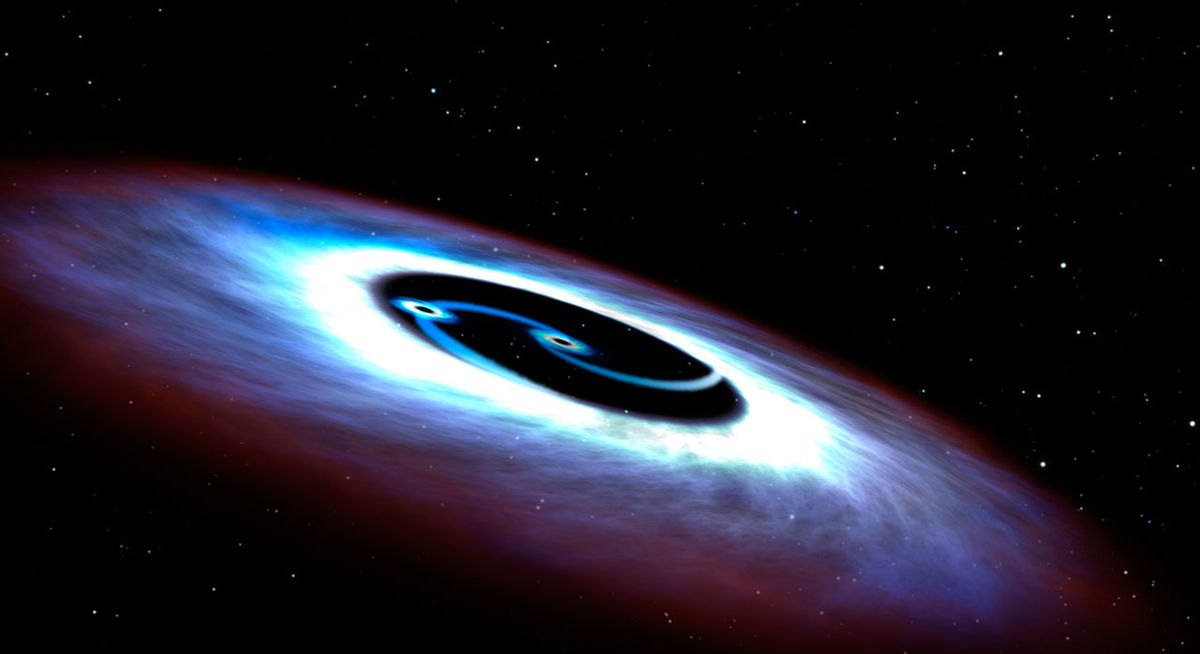Despite lots of talk about streamlining NEPA, this cannot actually be done. Environmental impact assessment (EIA) of large projects takes a long time for two inescapable reasons. First, nature is a complex system. Second, science takes time.
The result is what I call the Black Hole of environmental impact assessment because once you get in, you cannot get out. There is simply no end to the unanswered questions. Research is often like that with every answer raising more questions.
To begin with, in principle you have to identify every living thing that might be affected by the project, as well as all the important physical features. For the myriad animals and plants this is especially important if any are classified as threatened or endangered under the various protection laws.
You cannot just list all these things, oh no. You have to say where they are and in many cases what they are doing. Also how they interact, such that affecting one kind might affect others. There is the food web for example. Plus things like nesting, denning, hiding, travel, and so forth. All of this is potentially incredibly complex if an Agency or Court decides it is important.
Then, given all these living things, and what they are doing, and their physical world, comes the even more complex issue of impact. It is more complex because you are entering the world of possibility. Possibilities can be truly endless.
This is the impact part of the assessment, which only comes after a great deal of research on the actual environment is done. But considering possible adverse impacts can easily lead to new questions about the existing environment, calling for even more research.
Then after some of the more serious possible impacts become clear, we get into the issue called “mitigation”. This can mean one of two things. One is to figure out ways to change the project so as to reduce or eliminate the adverse impact. One nasty possibility is simply not to do the project. Or mitigation can mean doing things to offset the adverse impact. Improving things someplace else for example.
I have personally been down this long EIS road, trapped in the Black Hole (if black holes can have roads). In fact I took one of the first hits from NEPA. As a junior engineer I was helping design large dams for the US flood control program. One of my dams became one of the first test cases for what Environmental Impact Assessment meant in actual practice.
There being no benchmark EIA to follow, we just sent in a few pages from the planning report. We were promptly sued for failure to comply with NEPA. Serious environmental questions were raised and the research began. I eventually left the program for a faculty position at Carnegie Mellon. Some years later I lost track of the case when the EIA was well over a foot thick and had just been bounced again because the aesthetics section was deemed inadequate.
The dam was never built. In fact the entire flood control program came to a grinding halt. This was the clear intent of NEPA at the time and it was unhappily effective. I still feel bad when floods ravaged communities knowing we could have prevented it.
I was getting a Ph.D. in philosophy of science at the time so paid close attention to the central role that scientific research played in bogging us down. The term “environment” sounds deceptively simple but the physical environment is wondrously complex. I doubt Congress realized this at the time, or even today.
The NEPA mandate basically says this: “First understand everything that is going on, that might be adversely affected by your project, then figure out how to minimize or make up for these adverse effects. This kind of understanding cannot be streamlined. If the mandate is pushed hard enough it is actually impossible to achieve.
As a closing aside I want to mention the huge offshore wind projects presently proposed to line the East Coast. As my regular readers know, I have been looking into the potential EIA issues with these projects, especially off Virginia. See my articles to date listed at the end.
These EIA issues are massive for all offshore wind projects, not just Virginia’s. To begin with there is no precedent, just like with my dam many years ago. We have never built this sort of thing, which is really big, in this environment. What is the proper scope of the research?
Then too there is at least one severely endangered critter, the North Atlantic Right Whale, which lives along the entire Coast. There may well be others, migratory birds for example. Even worse, a lot of the environment is practically inaccessible for research purposes. It is under the water.
A lawsuit challenging the superficial EIA for a relatively small offshore wind project in New England has already been filed. If this sort of challenge becomes widespread along the Coast it is likely that nothing will be built for many years. It may never be built, just like our flood control dams.
Mind you I think these huge offshore wind projects are a very bad idea so would not mourn their demise. I fact I welcome it. The Black Hole can have them.
In closing here are my offshore wind EIA articles:
https://www.cfact.org/2022/07/13/virginias-offshore-wind-proposal-threatens-endangered-whales/
https://www.cfact.org/2022/07/22/are-the-feds-hiding-the-virginia-endangered-whales/
https://www.cfact.org/2022/07/26/threat-to-endangered-whales-gets-louder/
